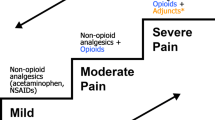Abstract
Objective
Local anesthetic agent is not usually used to reduce pain experienced by children undergoing venepuncture. This study was undertaken to determine comparative efficacy of local anesthetic cream, Indian classical instrumental music and placebo, in reducing pain due to venepuncture in children.
Methods
Children aged 5–12yr requiring venepuncture were enrolled in a prospective randomized clinical trial conducted at a tertiary care center. They were randomly assigned to 3 groups: local anesthetic (LA), music or placebo (control) group. Eutactic mixture of local anesthetic agents (EMLA) and Indian classical instrumental music (raaga-Todi) were used in the first 2 groups, respectively. Pain was assessed independently by parent, patient, investigator and an independent observer at the time of insertion of the cannula (0 min) and at 1- and 5 min after the insertion using a Visual Analog Scale (VAS). Kruskal- Wallis and Mann-Whitney U tests were used to assess the difference amongst the VAS scores.
Results
Fifty subjects were enrolled in each group. Significantly higher VAS scores were noted in control (placebo) group by all the categories of observers (parent, patient, investigator, independent observer) at all time points. The VAS scores obtained in LA group were lowest at all time points. However, the difference between VAS scores in LA group were significantly lower than those in music group only at some time-points and with some categories of observers (parent: 1min; investigator: 0-, 1-, 5 min and independent observer: 5 min).
Conclusion
Pain experienced during venepuncture can be significantly reduced by using EMLA or Indian classical instrumental music. The difference between VAS scores with LA and music is not always significant. Hence, the choice between EMLA and music could be dictated by logistical factors.
Similar content being viewed by others
References
Marks RM, Sachar EJ. Undertreatment of medical patients with narcotic analgesics. Ann Intern Med 1973;78:173–181.
Cancer Pain Relief and Palliative Care in Children. World Health Organization Publication 1998. Available from: URL: http://www.indiacancer.org/caca/cprc.html. Accessed October 16 2006.
Schechter NL, Allen DA, Hanson K. Status of pediatric pain control: a comparison of hospital analgesic usage in children and adults. Pediatrics 1986;77:11–15.
Schechter NL. The undertreatment of pain in children: An Overview. Pediatr Clin North Am 1989;36:781–794.
Hallen B, Uppfeldt A. Does lidocaine-prilocaine cream permit pain free insertion of IV catheters in children? Anethesiology 1982;57:340–342.
Ehrenstrom-Reiz G, Stockman O. Topical anaesthesia with EMLA, a new lidocaine-prilocaine cream and the cusum technique for detection of minimal application time. Acta Anaesthesiol Scand 1983;27:510–512.
Wahlstedt C, Kollberg H, Moller C, Uppfeldt A. Lignocaine-prilocaine cream reduces venepuncture pain. Lancet 1984;2:106.
Robieux I, Kumar R. Radhakrishman S, Koren G. Assessing pain and analgesia with a lidocaine-prilocaine emulsion in infants and toddlers during venipuncture. J Pediatr 1991;118:971–973.
Young S, Schwartz R, Sheridan M. EMLA cream as a topical anesthetic before office phlebotomy in children. South Med J 1996;89:1184–1187.
Arts S, Abu-Saad H, Champion G, Crawford M, Fisher R, Juniper K et al. Age-related response to lidocaine-prilocaine (EMLA) emulsion and effect of music distraction on the pain of intravenuous cannulation. Pediatr 1994;93:797–801.
Lal M, McClelland J, Phillips J, Taub NA, Beattie R. Comparison of EMLA cream versus placebo in children receiving distraction therapy for venepuncture. [abstract] Acta Pediatr 2001;90:154–159.
Product Monograph. EMLA cream. EMLA patch. Topical anesthetic for dermal analgesia [cited 2000 May2] Available from: URL: http://www.asterazeneca.ca. (Accessed April 6, 2006).
Noguchi LK. The effect of music versus no music on behavioral signs of distress and self-report of pain in pediatric injection patients. [Abstract] J Music Ther 2006;43:16–38.
Whitehead-Pleaux AM, Baryza MJ, Sheridan RL. The effects of music therapy on pediatric patients pain and anxiety during donor site dressing change. [Abstract] J Music Ther 2006;43:136–153.
Hesser B. The transformative power of music in our lives: a personal perspective. Music Ther Perspect 2001;19:53–58.
Music therapy: global oneness. Commitment. Available from: URL: htm.www.expierencefestivals.com. (Accessed July 18, 2006).
Music therapy, science, healing art. Available from URL: indianprofile.com/ayurveda/music therapy.htmAccessed April 16, 2006.
Petrie A, Sabin C. Medical statistics at a glance. Oxford; Blackwell Science, 2000;119.
Lord BA, Parsell B. Management of pain prehospital setting using a visual analogue scale. Prehosp Disast Med 2003;18:353–358.
Hester No. Assesment of pain in children with cancer. Available from: http://www.pairesearch.utah.edu/cancerpain/ch14.html. (Accessed June 10, 2006)
Han P. The use of music in managing pain for hospitalised children. [Abstract] Australian J Music Ther 1998;9:51–56.
Manne SL, Jacobsen PB, Redd WH. Assessment of acute pediatric pain: do child self-report, parent ratings, and nurse ratings measure the sample phenomenon? Pain 1992;48:45–52.
McGrath PJ. Abstracts and commentaries on pain in infants, children and adolescents. Pediatric Pain Letter 1998;2:25–35.
Fradet C, McGrath PJ, Kay J, Adams S, Luke B. A prospective survey of reactions to blood tests by children and adolescents. Pain 1990;40:53–60.
Shankar R. Appreciation of Indian classical music. Available from: http://www.ravishankar.orgindianmusic.frame.htm. (Accessed Aug 16, 2006).
Marwah N, Prabhakar AR, Raju OS. Music distraction — its efficacy in management of anxious pediatric dental patients. Soc pedod Prev Dent 2005;23:168–170.
Weiner RS. Management of procedural pain in children. In Weiner RS, ed. Pain management: a practical guideline for clinicians. 6th eds. CRC Press 2002; 477–491. Weinberger NM. The musical hormone. [abstract] MuSICA Research Notes 1997;4:212–214.
Weinberger NM. The musical Hormone. MUSICA Research Notes 1997;4:212–224. [Abstract]
Myskja A, Lindbaek M. How does music affect the human body? [Abstract] Tidsskr Nor Laegeforen 2000;20:1182–1185.
Sinz R. Psychophysiological differentiation of musical effects by the degree of minute-rhythmic coupling. [Abstract] Acta Biol Med Ger 1977;36:1473–1478.
Sokhal SS. Music: nourishment for soul. Available from URL: http://www.lifepositive.com/body/new-age-therapies/musictherapy/music-therapy.html. (Accessed Nov 12, 2006.
Ramchandran PP. Music therapy. Available from: URL: http://www.keralaiyers.com. (Accessed Aug 14, 2006).
Author information
Authors and Affiliations
Corresponding author
Rights and permissions
About this article
Cite this article
Balan, R., Bavdekar, S.B. & Jadhav, S. Can Indian classical instrumental music reduce pain felt during venepuncture?. Indian J Pediatr 76, 469–473 (2009). https://doi.org/10.1007/s12098-009-0089-y
Received:
Accepted:
Published:
Issue Date:
DOI: https://doi.org/10.1007/s12098-009-0089-y




